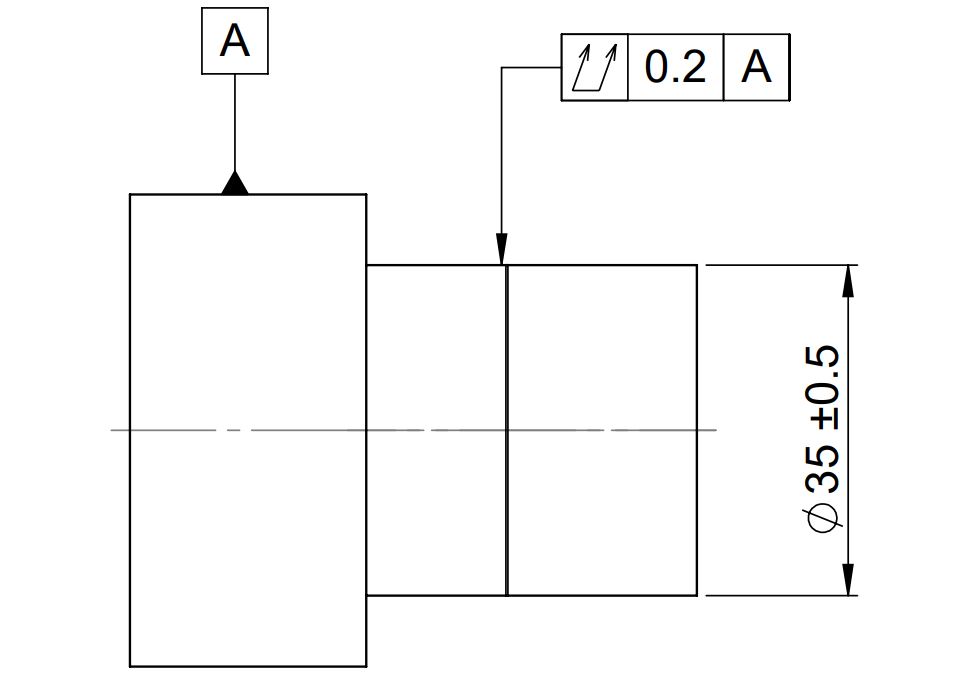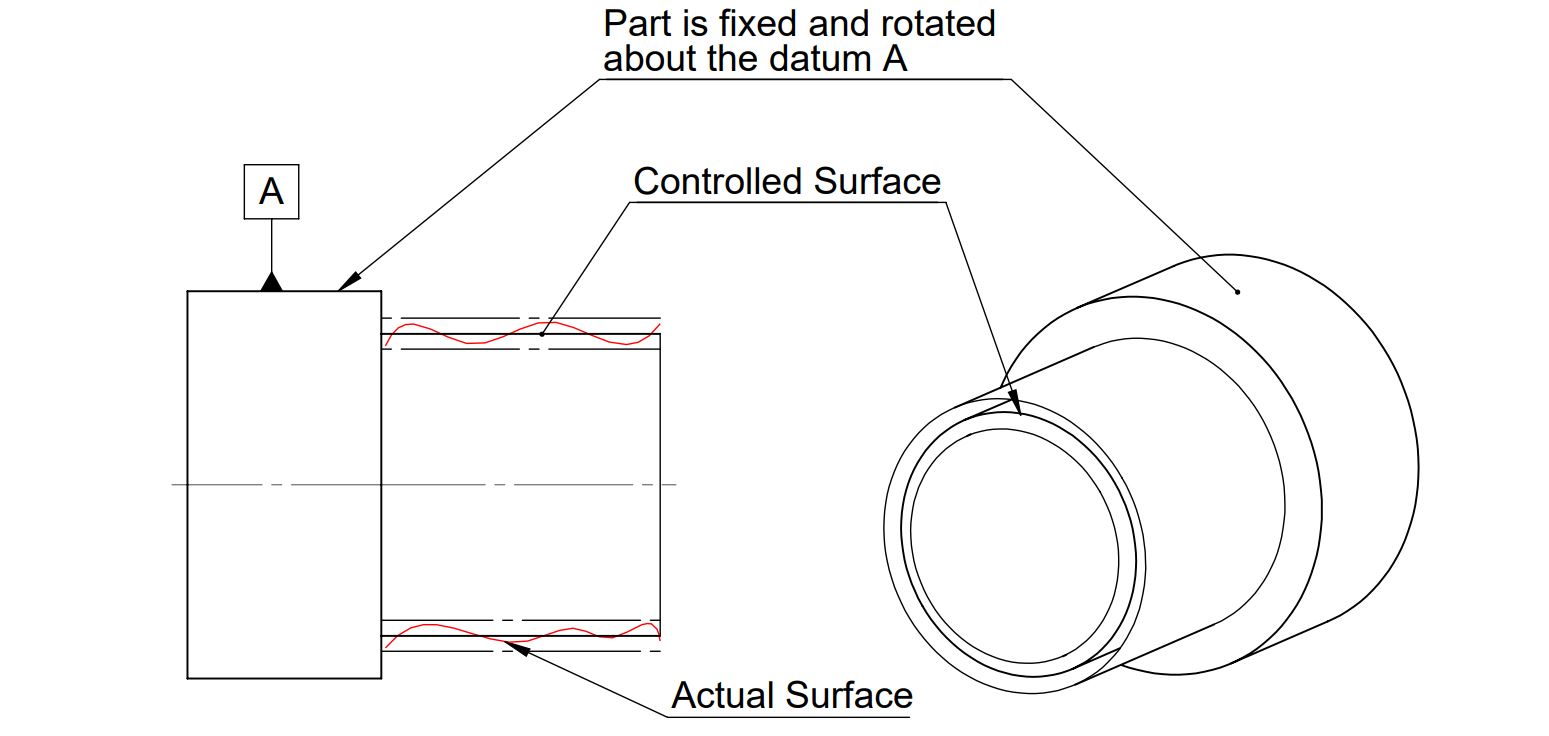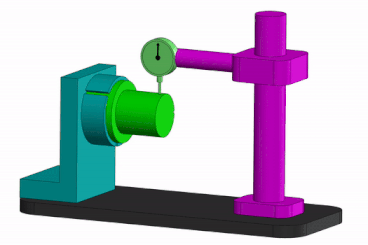What is Total Runout in GD&T?
Similar to Circular runout, Total Runout tolerance in GD&T controls the variation in a feature when the part is rotated 360° about the datum axis.
It is different from cylindricity. Cylindricity controls the roundness of a feature irrespective of any datum. Total-runout in gd&t controls the offset in the cylindrical feature axis when the part constrains at the datum. Don’t miss this article on the basics of Geometric Dimension and Tolerance.
Representation in Engineering Drawing

We can apply Total-runout tolerance to only cylindrical features datum surface or an axis. LMC and MMC modifiers are not applicable with it.
Tolerance Zone

Total-Runout tolerance creates a 3-dimensional cylindrical tolerance zone. All points of the controlled surface must lie within two cylindrical surfaces (at a distance equal to tolerance value) when the part rotates about the datum feature.
Applications
Total Runout in GD&T controls the round feature circular runout, concentricity, cylindricity, circularity, straightness, and perpendicularity. We define this control tolerance in large transmission shafts, complex rotating assemblies, etc.
Quality engineers recommend applying this GD&T control tolerance in precise parts only because it controls various GD&T tolerance with one tolerance.
How to Measure Total Runout?

We can measure Total Runout GD&T tolerance using the following instruments.
- Height gauge
- Surface plate
- Part rotating arrangement such as v-block or rotating chuck.
The first step in measuring the runout tolerance is to fix the part at the datum points and bring the dial gauge to the controlled surface’s highest point.
Afterward, rotate the part and move the dial gauge along the controlled surface length. The variation in the dial gauge reading indicates the total controlled surface variation. Total variation in the controlled surface shall not exceed the given tolerance for the defining feature.
We will keep adding more updates to this article. Add your suggestions, comments, or questions in the comment box.

Add a Comment